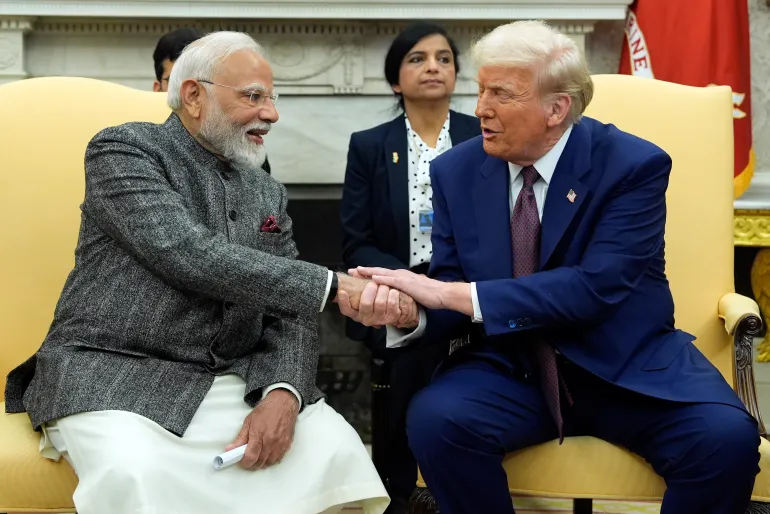lipflip – India and the United States have resumed high-level trade discussions in New Delhi, renewing hopes for a long-stalled bilateral agreement. A delegation led by US trade negotiator Brendan Lynch is meeting Indian officials to explore ways forward. Though not an official negotiation round, both sides describe the dialogue as a vital step toward breaking the deadlock.
Read More : UN Report Accuses Israel of Genocide in Gaza Conflict
Indian commerce official Rajesh Agrawal confirmed the nature of the meeting as exploratory. He emphasized the intent is to “see how we can reach an agreement,” reflecting cautious optimism. The talks follow a period of strained relations triggered by US-imposed tariffs and India’s energy and defense ties with Russia.
Tensions escalated last month after former President Donald Trump announced a 50% tariff on select Indian exports. The move, framed partly as a response to India’s continued purchase of Russian oil and arms, halted scheduled trade talks. India denounced the tariffs as “unfair” and defended its energy policy as essential for national needs.
The US remains a key destination for Indian goods, including textiles, seafood, and gems. Many Indian exporters have already felt the pinch of reduced competitiveness and lower demand. These informal discussions may set the stage for formal negotiations to restart, offering some relief to affected industries.
US trade adviser Peter Navarro, speaking to CNBC, said, “India is coming to the table. We will see how this works.” His remarks signaled a shift in tone, as he has previously criticized India for its neutrality on the Ukraine conflict. Navarro had even dubbed the war “Modi’s war,” highlighting his frustration over India’s ties with Moscow.
Despite the political noise, recent statements by leaders suggest improving diplomatic dynamics. Trump called India a “close friend” in a recent online post, and Prime Minister Narendra Modi responded by affirming the countries’ “natural partnership.” These signals hint at a shared willingness to mend strained trade relations.
Agriculture and Tariffs Remain Key Obstacles to Final Trade Deal
While optimism is building, major hurdles remain—particularly around agriculture and tariff disputes. The United States has long pushed for wider access to India’s agricultural and dairy markets. However, India has consistently resisted, citing concerns over food security and the livelihoods of millions of small-scale farmers.
Washington views India’s farm sector as a lucrative yet restricted market for American produce. US Commerce Secretary Howard Lutnick recently reignited criticism, questioning why India won’t import American corn. His comments underline long-standing frustrations over India’s protective agricultural policies.
Indian analysts argue that opening the farm sector could harm domestic producers and undermine food independence. They urge the government to uphold its current stance, stressing that trade liberalization must not compromise rural stability or economic sovereignty.
Adding complexity, the US tariffs continue to affect Indian exports, particularly in labor-intensive sectors. Garment and seafood producers have seen lower demand, hurting jobs and production. Resolving these issues is essential for a comprehensive trade pact.
Read More : £5bn AI Investment Boost Announced for UK by Google’s Parent Firm
Sergio Gor, nominated by Trump as the next US ambassador to India, predicted the trade deal “will get resolved in the next weeks.” While that timeline remains uncertain, it reflects growing political will on both sides. The current talks, even if informal, mark progress after a turbulent few months.
If both nations can bridge their differences—particularly on agriculture and energy—the path to a trade deal could become clearer. For now, the focus remains on maintaining dialogue and building trust to enable future rounds of formal negotiation.
